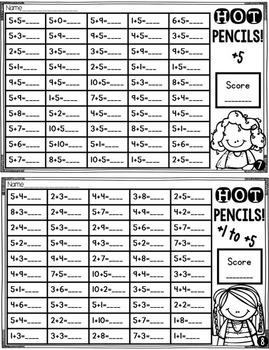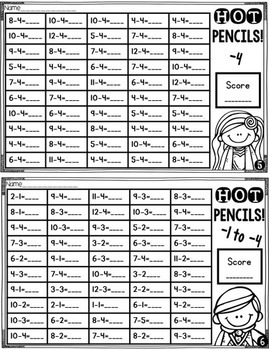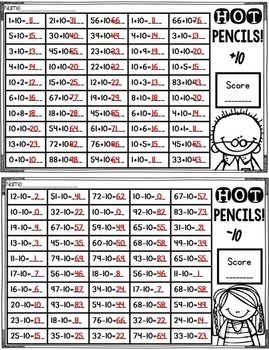Addition and Subtraction Fact Fluency
Hollie Griffith
32.1k Followers
Grade Levels
1st - 2nd
Subjects
Resource Type
Standards
CCSS1.NBT.C.4
CCSS1.NBT.C.5
CCSS1.OA.C.6
Formats Included
- PDF
Pages
44 pages
Hollie Griffith
32.1k Followers
Description
This bundle of addition and subtraction facts is perfect for mastering basic math facts, developing automatic recall, and increasing fact memorization.
How it works:
Students are given two minutes to complete 50 facts each day. As their automatic recall increases, their scores will increase as well! My students love the friendly competition!!
Included in this bundle:
+1, +1 to +2
+3, +1 to +3
+4, +1 to +4
+5, +1 to +5
+6, +1 to +6
+7, +1 to +7
+8, +1 to +8
+9, +1 to +9
+10, +1 to +10
-0 to -1, -1 to -2
-3, -1 to -3
-4, -1 to -4
-5, -1 to -5
-6, -1 to -6
-7, -1 to -7
-8, -1 to -8
-9, -1 to -9
+5 to +10, -5 to -10
+10, -10
Mix Up
Total Pages
44 pages
Answer Key
Included
Teaching Duration
N/A
Report this resource to TPT
Reported resources will be reviewed by our team. Report this resource to let us know if this resource violates TPT’s content guidelines.
Standards
to see state-specific standards (only available in the US).
CCSS1.NBT.C.4
Add within 100, including adding a two-digit number and a one-digit number, and adding a two-digit number and a multiple of 10, using concrete models or drawings and strategies based on place value, properties of operations, and/or the relationship between addition and subtraction; relate the strategy to a written method and explain the reasoning used. Understand that in adding two-digit numbers, one adds tens and tens, ones and ones; and sometimes it is necessary to compose a ten.
CCSS1.NBT.C.5
Given a two-digit number, mentally find 10 more or 10 less than the number, without having to count; explain the reasoning used.
CCSS1.OA.C.6
Add and subtract within 20, demonstrating fluency for addition and subtraction within 10. Use strategies such as counting on; making ten (e.g., 8 + 6 = 8 + 2 + 4 = 10 + 4 = 14); decomposing a number leading to a ten (e.g., 13 - 4 = 13 - 3 - 1 = 10 - 1 = 9); using the relationship between addition and subtraction (e.g., knowing that 8 + 4 = 12, one knows 12 - 8 = 4); and creating equivalent but easier or known sums (e.g., adding 6 + 7 by creating the known equivalent 6 + 6 + 1 = 12 + 1 = 13).





